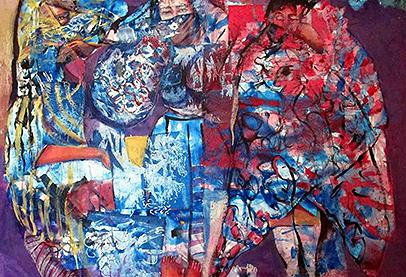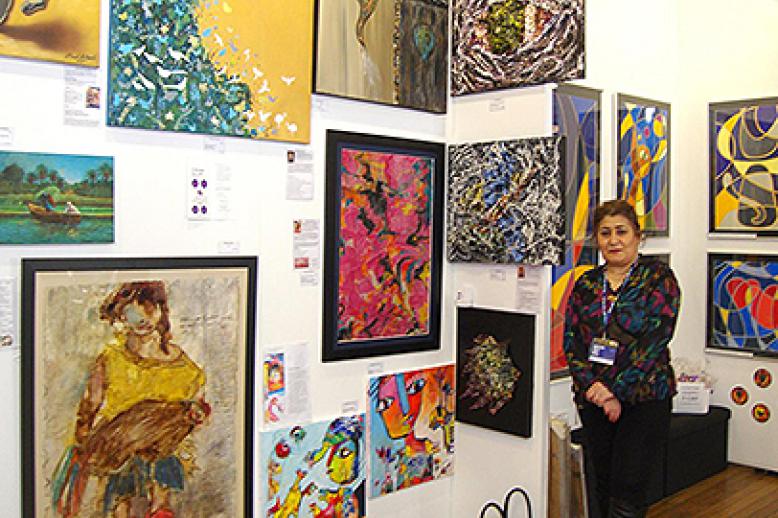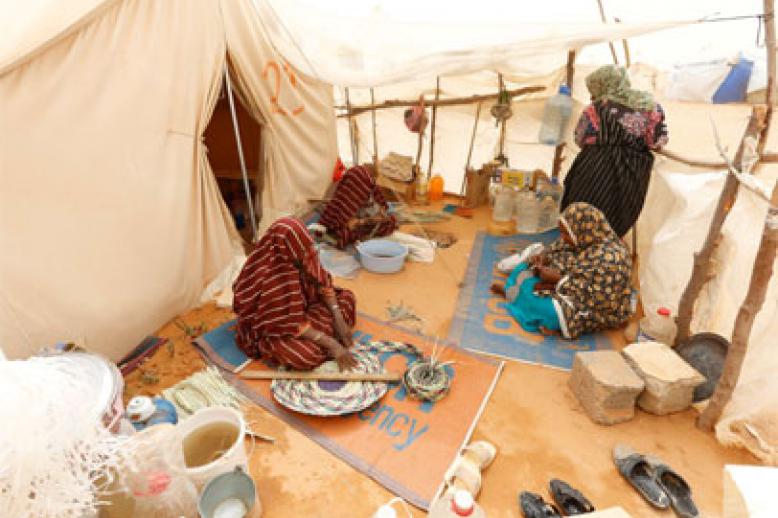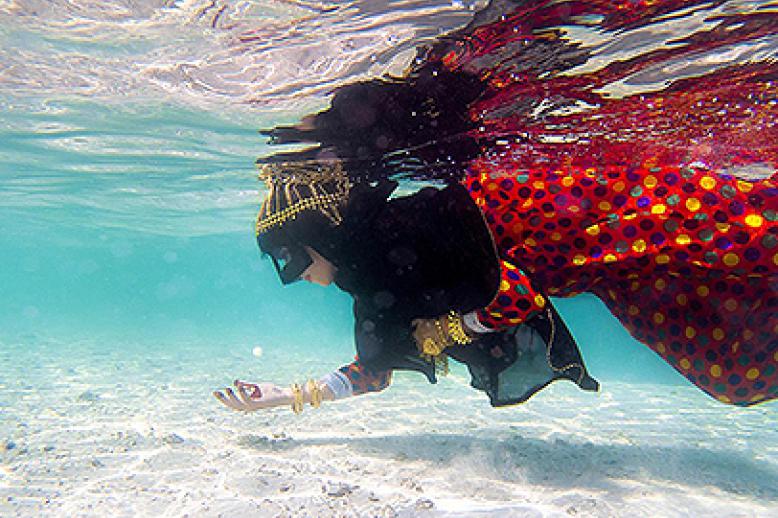London exhibition revives memories of Libya

The works of 25 Libyan artists on display in London’s P21 Gallery explore their direct experience and memories of Libya through paintings, installations, films and photography, both archival and recent.
“Retracing a Disappearing Landscape” is curated by Najlaa el-Ageli, the founder of Noon Arts Projects, a private arts foundation that aims to bring the work of Libyan artists to the international stage.
“A sense of trauma is always present when addressing Libya’s modern history and I think Libyans generally haven’t dealt with it properly or directly,” said Ageli, who has been planning the exhibition for three years.
“The exhibition became a tool of looking back. I wanted to question and retrace how the collective memories could be nudged to understand where we seem to be — somehow lost on what Libyan identity is. History always provides the clues. Also, Libya’s current social, cultural, political and economic scenes are shifting at a speedy rate and, unfortunately, the younger generations are not very aware of the past.
“So I want people to reflect on the past, the present and where do we go now as Libyans at home and abroad.”
Ageli started with her own family album in deciding which works to select. “The photos opened up many narratives and provided the visual evidence of what was. I thought about how I could develop this to explore the personal and collective memories as creative concepts in tandem with the historical context. I reached out to artists whose work already tackled this,” she said.
The works are from artists in the diaspora and at home.
Leila Sharif used the photo archives of a family from Tripoli to reflect Libya’s recent history by digitally manipulating the originals to provide a new interpretation of family history.
In “Sidi,” through audio recollections, the curator’s father-in-law, Ibrahim Dugdug, talks about growing up in Tripoli in the late 1930s and ’40s. He refers to old streets and clans who were neighbours and reflects on the history of the monarchy and the 1969 coup that put former dictator Muammar Qaddafi in power.
Libya’s traditional crafts, which are in danger of disappearing, are seen in the works of Haab Alroman, the only woman in Libya familiar with the pomegranate seed weave made from cotton or wool and mixed with silk thread using geometric designs and symbols.
Arwa Massoudi’s embroidered collection pays tribute to the dying craft of silk thread embroidery used to decorate household cushions and tapestries.
The mysterious disappearance in 2014 of the Ghazala Fountain, which stood as an iconic landmark in Tripoli for decades, is investigated by Marcella Mameli-Badi, Alla Budabbus and Takwa Barnosa in an installation that uses ceramics, photos, visual art and archival material. The fountain was designed and built by Italian sculptor Antonio Vanetti in 1933.
Libya’s tragic recent history is seen in the work of photographers Guy Martin and Mohammed Ben Khalifa. When reporting on the Libyan revolution in 2011, Martin came across photographs of disappeared Libyan men on the walls of the courthouse in Benghazi.
“Are they the faces of men who had not returned from a brutal war with Chad in the 1970s, men arrested by Qaddafi’s secret police, those publicly executed in Benghazi in the 1980s or men who decided to go to the frontline in 2011 to defend the family home from the forces of the dictator?” Martin asks in a statement next to the photos.
Ben Khalifa’s photographs show washed-up love letters, prayer beads, flip-flops, photos and other belongings of Syrian refugees and African migrants who drowned attempting to cross to Europe.
In calligraphic block strokes visual evidence on white ceramic, Mohamed Alkharrubi’s seven plates carry the names of places that have disappeared in Libya due to political upheaval.
Tripoli is a recurring monumental backdrop in the artworks: The city’s past and architecture become intermingled with the artists’ stories and their attempt to retrace the city’s disappearing and ever-changing landscape.
“Looking at the known and unknown memories of Libya as a homeland through the work of its citizens — both at home and abroad — the country is revealed to be a powerful force in their lives. By sharing their experiences, it is hoped to develop a meaningful discourse on what Libya represents for its people and the hopes for its future,” Ageli said.
“By looking at the personal and collective memories — through the visual artworks, the installations, the photography, the audio, the videos — viewers will see the real connections that tie the Libyans together and a unique Libyan sense of identity,” she added.
“Retracing a Disappearing Landscape” is at London’s P21 Gallery, through May 12.
Karen Dabrowska is an Arab Weekly contributor in London.
This article was originally published in The Arab Weekly.





